Welcome to the era of entrepreneurship, where people are seizing opportunities to start their own businesses.
Along this journey, a pivotal question pops up: Do I need to trade mark my product or service?
This question led me to Rachel Harrison, a trade mark attorney with 20 years of experience working in Magic Circle and City law firms.
Our paths crossed during a coaching programme, and today, Rachel spearheads her own company, RHEIA Intellectual Property, where she helps individuals and their growing start-ups with her straight-talking legal advice.
Rachel shares everything you need to know to set yourself up for success.
Hi Rachel. Thanks for meeting me today. It’s great to see the success you’ve had setting up your business by helping others set up theirs.
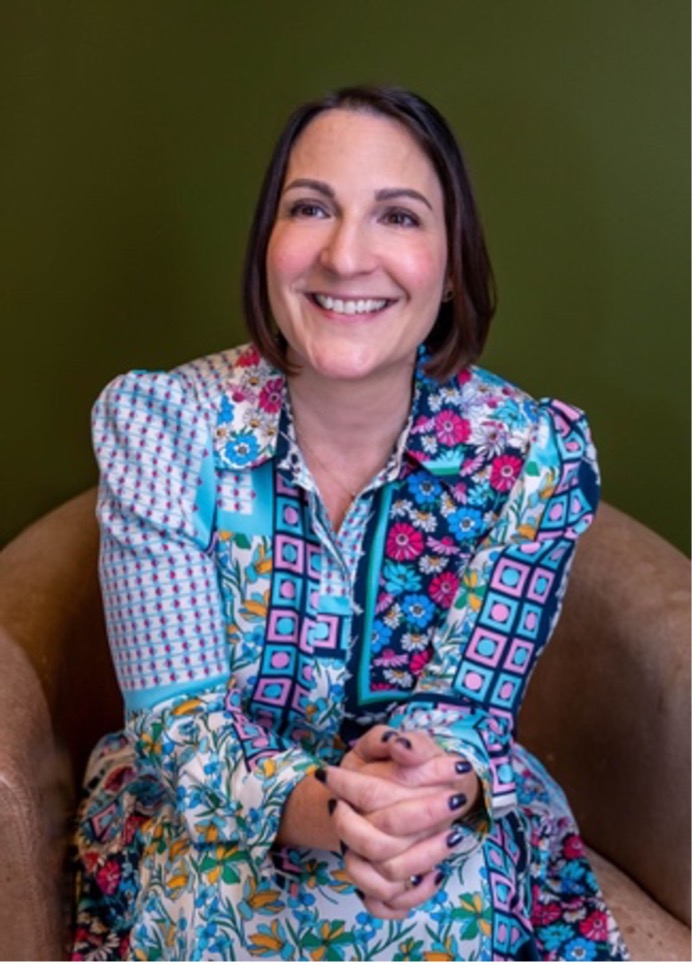
To begin with, for those who may need more detail, what’s a trade mark?
A trade mark is an identifier, differentiating your goods or services from anybody else’s. The law defines it as an indication of the origin of your goods and services.
Essentially, it’s so people can tell that a product or service is from your company.
The most common trade marks are names, logos, a name within a logo or a slogan, like McDonald’s ‘I’m lovin’ it’.
But you can register other things like shapes, packaging, smells, sounds or moving images.
The roaring lion at the beginning of MGM movies and the Intel jingle are examples of sound trade marks. And Nokia’s image of two hands reaching out into a handshake is a known moving image trade mark.

Rachel regularly shares her advice on LinkedIn.
What’s the most memorable trade mark you’ve worked on?
I’ve worked with countless big brands over the years. My favourites include Porsche, Madonna and Game of Thrones.
I also worked on a trade mark for Donald Trump, not directly but through his US lawyers. I was tasked with registering a trade mark for a coat of arms. There’s a whole area of law around coats of arms due to their historical heritage and whether they belong to someone’s ancestry. This was years ago, but I recall his application got rejected.
But working with smaller brands is equally, if not more, rewarding.
What’s the point of trade marks?
Trade marks protect your assets.
On the business TV show Dragon’s Den, one of the first questions Peter Jones will ask before investing in people’s businesses is: Have you protected your intellectual property (IP)?
Registering your trade mark is an insurance policy to stop people infringing your IP.
Investors will need to know the name is protected if you’re trying to get investments or sell your business.
And as your business grows, it’s also a way to generate revenue via a license or franchise, for example.
When do you decide ‘should I trade mark my business name’?
If budget allows, it’s never too early to register your trade mark.
Ideally, as you start thinking about your business name and logo, conduct some searches.
These are full trade mark searches conducted by a professional searching company and not Google searches, which won’t tell you if your trade mark or something similar is already in use.
You want your protection in place and have your trade mark cleared for use.
Otherwise, you risk infringing other people’s IP.
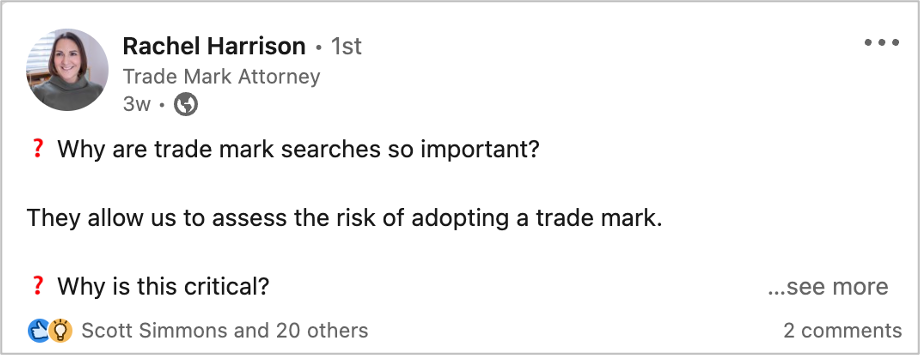
Rachel breaks down the importance of trade mark searches
Should you register a trade mark as an individual or company in the UK?
It doesn’t really matter since you can easily transfer ownership. You may start by personally owning your trade mark registration if you don’t have a registered company. Then, once you set up your company, you can transfer the trade mark ownership to your company.
How much does it cost to register a trade mark in the UK?
You can register your trade mark yourself via the Intellectual Property Office (IPO).
The fee to register online starts at £170. That fee is for one category of goods or services. There are 45 classes which all products and services fall into.
For each additional class it’s an extra £50.
In some cases, I’ll recommend that people apply themselves. In other cases, it’s best to get legal advice. A good proportion of my work is picking up the pieces when people have filed their applications incorrectly and have to re-apply for various reasons. Other times, they haven’t cleared their mark for use and receive an infringement claim.
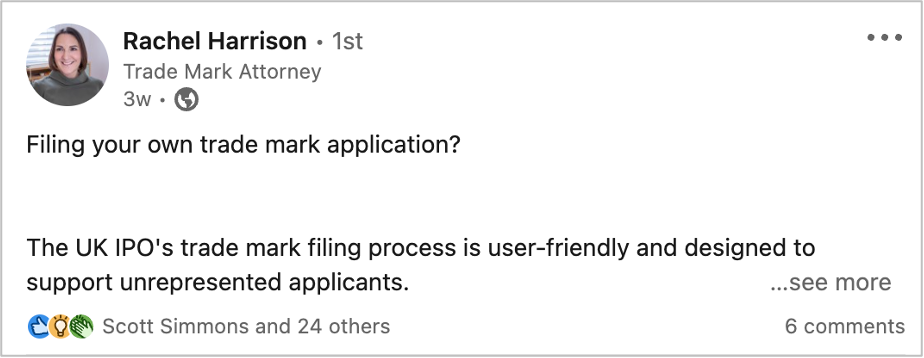
Rachel on the pros and cons of filing your own trade mark.
How can you tell if your trade mark is too similar to someone else’s?
There is case law around this going back hundreds of years.
You may think your name or logo isn’t similar but you could be wrong under the law. People often believe that as long as their trade mark isn’t identical to someone else’s , there won’t be a problem. That’s incorrect.
It’s best to put yourself in a customer’s shoes. If they saw your products or services in a shop or online, would they be confused, or assume they’re connected with the owner of the other mark?
It’s also worth asking family and friends for their honest opinion. Even better is to imagine you’re the other company, and would they view your trade mark as too similar to theirs?
If in doubt, speak to a lawyer.
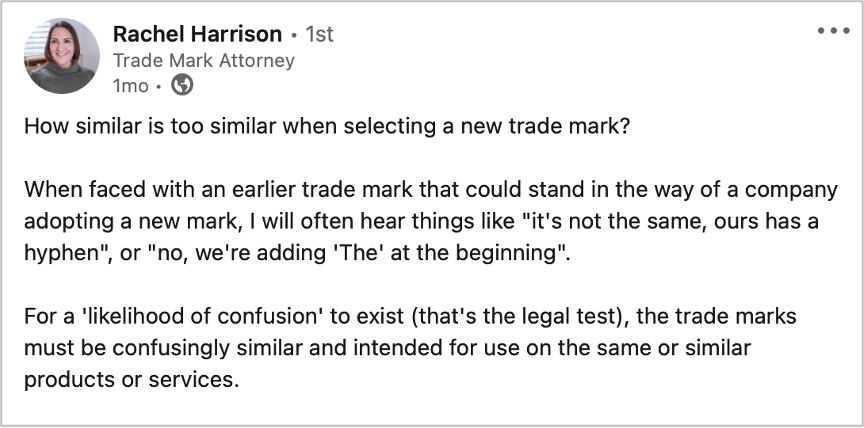
Rachel answering one of her most commonly asked questions
How long do trade marks last?
Once you register your trade mark in the UK, it’ll last for 10 years. That’s pretty much the standard now across most countries.
The fee to renew after 10 years is £200 and you can renew it indefinitely.
That’s unlike patents, which are exclusive rights for an invention. Those can only be renewed for a maximum of 20 years.
But trade marks can be renewed forever, provided they go unchallenged and you continue to use them. The oldest UK trade mark is the Bass (beer) logo which was the first mark to be registered in 1875 and is still going strong today.
How do you help clients and how much do you charge?
I like to set a flat fee upfront.
Most trade mark attorneys and law firms will charge you a fee to prepare your application, another fee to file it, another fee at the publication stage, another at registration and another fee if there’s an objection. Costs can mount up.
For my set fee, which starts at £1,000, I’ll prepare and file your application and see it through to registration, provided no major objections or challenges are faced.
Clearance searches in the UK start at about £1,000 to check if the trade mark you’re applying for or something similar is already registered or in use.
It’s always advisable to clear your mark for use before launching your product or services and before applying to register it. This avoids walking into expensive disputes.
An alternative strategy is to ‘file and see’. It’s likely (although not certain) that any issues will be drawn out during the application process.
If you’ve infringed someone else’s trade mark, what penalties could you face?
Ultimately, you can be sued in the courts, be forced to give up your trade mark and may be liable for damages and costs.
9 times out of 10, someone will write to you, and you’d be given the chance to stop whatever the infringing act is.
There are cases where an agreement can be reached if you’re in a different enough business space from the other party.
That’s why a search is helpful to assess your risks.
What’s the process of registering a trade mark?
The process in the UK is quick and straightforward compared to other countries. The UK IPO can approve your application in three or four months.
They can raise objections to the wording of your goods and services or if your trade mark is descriptive (too generic) or not distinctive enough. It can also be refused if it’s contrary to public policy or is viewed to be offensive.
Once your application is approved, it goes to a mandatory publication period where it has to sit for two months for third parties to object if they feel your trade mark is too similar to theirs.
If no third-party objects, you’ll get your registration certificate a few weeks later. But from start to finish, it’s generally three to four months.
What are some tough countries to register your trade mark?
The US can be quite slow and the requirements are more strict than the UK. The US Patent and Trademarks Office is currently taking nine months to even examine your application once you’ve filed.
That’s a country to think about filing early, given it’s a big market that many people want to break into.
India can take up to 10 years as their processes are slow and not very responsive. The thing to remember is your filing date – that’s your flag in the sand.
Once you’ve filed, no one can sneak in front of you and if anyone comes later with a similar trade mark you can challenge them.
How best to apply for multiple country trade marks?
I often get asked for worldwide trade marks. There’s no such thing.
You have to register your trade mark individually in every country you want to operate in.
Most businesses don’t register their trade mark in all countries as it’s unnecessary.
Global companies like Google, Apple or Coca-Cola might do as they can probably afford to. Plus, they have legal representation in every country, which you need, to handle trade mark registrations.
What would be the best way to register your trade mark in some key countries?
UK – As mentioned earlier, the UK is relatively quick and cheap. Start here if it’s the country you’re based in and are likely to operate the most in.
EU – The EU is often the next place people want to register their trade mark as their business grows. It’s one of the few places you can do an all-in-one trade mark that covers its 27 member countries.
China – If your business sells products, I’d recommend investing in a Chinese trade mark registration. Given the amount of counterfeit goods that come out of the region, it can be really hard to tackle without a trade mark.
US – The US can be expensive but it’s a federal registration covering all 50 US states. Another thing to consider with the US is that you’re required to prove you’re already selling your goods or services before you can register your trade mark. This differs from the UK, where even after you’ve filed for a trade mark, you have five years to decide if you still want to use it. No one can challenge you during that period for non-use. After those initial five years, it’s a case of use it or lose it if you can’t prove the sale of your goods and services under that trade mark. In that regard, the UK is much more straightforward than other countries.
What should you do if somebody uses your trade mark, and how can you monitor its use?
Once you’ve registered your trade mark, the best thing to do is to keep your eyes open, especially on social media, if some accounts use your name or something similar.
I’ve been getting many queries about this recently for various TikTok, Pinterest and Instagram account infringements.
You can also set up a watching service to monitor the trade marks in your registered countries. It will notify you of any new applications being filed that may conflict with yours that you may want to challenge.
Where someone has infringed your trade mark, you can write to them and ask them to stop. Often you can settle it by just asking politely.
Otherwise, you can escalate it in various ways, ultimately suing them in the courts, but that can cost you upwards of £100k. So start with writing to them first!
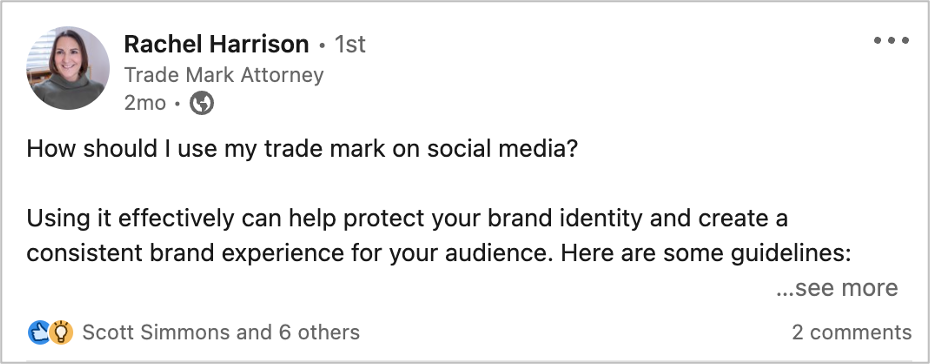
Rachel advising on how to protect your trade mark from being used by other social media accounts
Can you trade mark content businesses such as blogs or podcasts?
You can register your content business’s name or logo the same as any other goods or services company.
It’s just the services you offer that are different and would fall into different classes.
The thing to bear in mind with content creation businesses is how you protect yourself from people copying your content.
It’s really common at the moment for people to go on websites or blogs, lift text and use it as their own. I’ve been getting lots of queries about this.
Copyright is different from trade marks because you can’t register it.
The copyright in anything you create, whether music, a poem, a piece of art, a podcast, a book or a blog, is automatically yours. You can enforce that against anyone who’s copied it.
There’s a whole other area of law around this, but it’s one for content creators to be aware of.

With a lot of content now produced using artificial intelligence (AI), what are copyright rules around this?
Technology moves much faster than the law. Trade mark and copyright laws have yet to catch up to the advancements around AI.
There aren’t specific laws to back it at the moment, but care should be taken when creating content using AI and when using content taken from programmes such as ChatGPT.
You may infringe someone else’s copyright if you make unauthorised use of content produced by AI sites. In other cases, your content may be made available to others without your knowledge.
How can content creators protect themselves when it comes to copyright?
Copyright often comes up alongside trade mark issues. It may start with someone using your similar trade mark name, then copying your content and work.
Before emails and the internet, we advised clients to take a copy of what they created and send it to themselves in the post. Then, keep the postmarked letter as proof of the date of creation. That’s, of course, outdated now.
But you should keep a paper or electronic trail of your drafts that show how your content evolved should you need to prove it’s content you came up with on your own.
To enforce copyright, it must be shown that your work was copied. It can’t be enforced against someone who independently created content, even if the final result may have been similar or identical to yours.
A good example is the Ed Sheeran case in the news earlier this year, one of several copyright cases he’s successfully defended. He was cleared in court of copyright infringement of a Marvin Gaye song.
He proved there are a finite number of chord sequences people use in songs and played several songs that share the same ones.
He also provided his recordings, notes and conversations as he developed the song. So protect yourself by keeping a trail of your content creation process.
Any final tips for people to consider?
Think about trade marks early, as I’ve seen people get caught out so many times with conflicting earlier trade marks.
Make sure your business name and logo are cleared so you can ultimately use them with confidence.
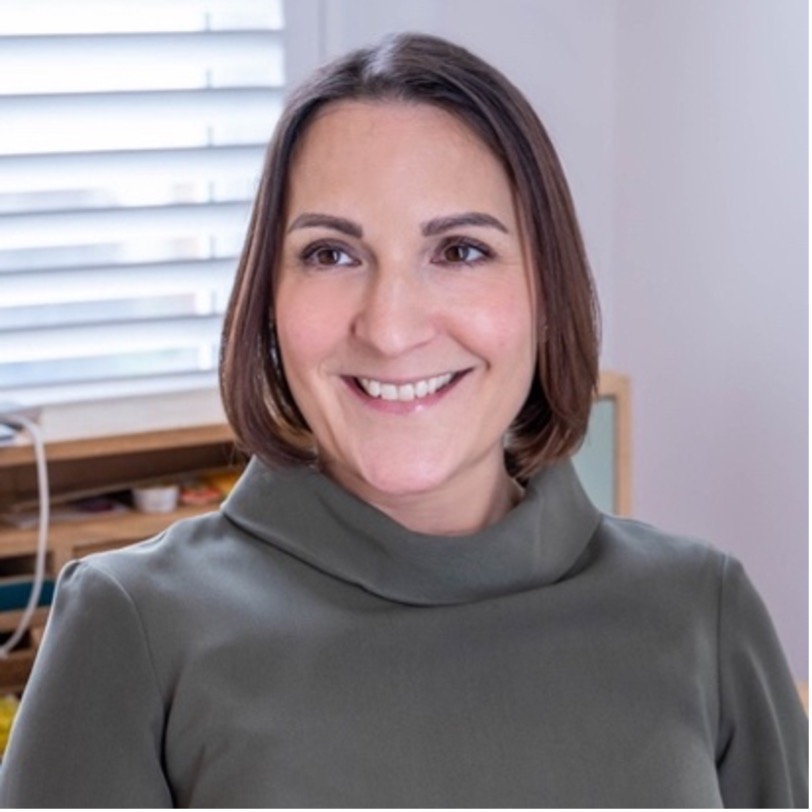
If you’re an individual, start-up company or an established business looking for advice on trademarking a business and design matters, you can contact Rachel for an initial chat via her website, LinkedIn or email: rachel@rheia-ip.com
